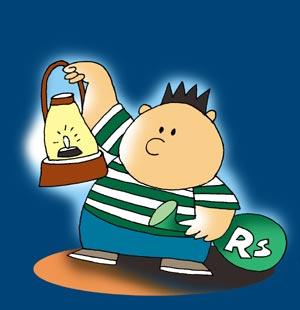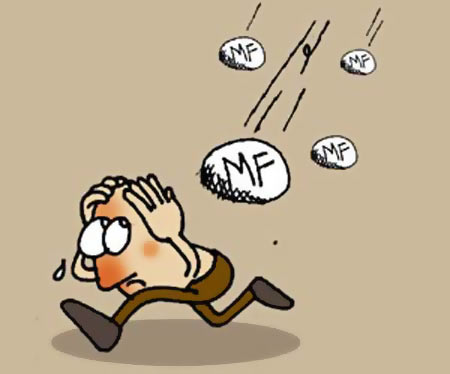 | « Back to article | Print this article |
How to find the BEST diversified equity mutual funds
Six parameters to help you to find the winners.
It is plain wisdom that to invest in a diversified equity fund, you need to pick the right one that suits your requirement the best. In reality it is easier said than done. When there are more than hundred equity funds claiming best returns in their schemes, it is quite puzzling to zero in on one. And the self-seeking mutual fund agents who survive only by cooking the figures further confound the problem.
To cut through the confusion, you need to have a set of objective factors serving as parameters while selecting the right diversified equity fund. What matters is the performance of a diversified equity fund against all the parameters.
The fundamental thing to remember is that not just one factor makes a diversified equity fund worthy enough to be a part of well-performing mutual fund portfolio. An ideal diversified equity fund must pass all these 6 parameters.
1. Match your investment objective with that of the diversified equity fund
First things first. It is of utmost importance that your investment objective is in tune with the diversified equity fund’s investment objective.
For example, if you want to avoid risk, it is advisable for you not to invest in a small cap diversified equity fund that invests in small size companies and can yield volatile returns.
The author is an MBA (Finance) and Certified Financial Planner. He is the director and chief financial planner of Holistic Investment Planners (www.holisticinvestment.in) a firm that offers Financial Planning and Wealth Management. He can be reached at ramalingam@holisticinvestment.in.
How to find the BEST diversified equity mutual funds
2. Evaluate returns across diversified equity funds within the same class
To compare diversified equity funds within the similar category is one of the essentials for benchmarking a fund. When evaluating a large cap diversified equity fund for investment, you must compare its yield with other matching large cap diversified equity funds.
Comparing it with mid cap diversified equity funds won’t give you the real picture as the risk-reward relationship between both is too wide to compare.
Another factor in evaluating a diversified equity fund is timeframe. Diversified equity funds are designed to deliver returns over long period of years; you should invest in diversified equity funds with a foresight.
Evaluating a diversified equity fund over a longer timeframe helps you gauge its performance during boom and bust periods. You can observe the consistency of the returns of a diversified equity fund by its performance during different market phases combined with the category average.
3. Check diversified equity fund returns against the benchmark index
It is mandatory for every diversified equity fund to mention a benchmark index in its offer document. This benchmark index is the signpost to judge if the diversified equity fund has fared well.
While evaluating the performance of a diversified equity fund against its benchmark index, you should take into account the longer time period. Those diversified equity funds that outperform their benchmark indices constantly are best suited for investment.
In India, most diversified equity funds do better than their benchmark indices over long timeframe. But during choppy times you may find many diversified equity funds lagging behind their benchmark indices. Those diversified equity funds that stay ahead of their benchmark indices during rough times must be earmarked.
How to find the BEST diversified equity mutual funds
4. Evaluate the consistency of the diversified equity fund
Apart from peers and benchmark index evaluation, a diversified equity fund must be judged by its historical performance. Many diversified equity funds don’t stay stable over the years, they take a dip during recessions and sometimes even dip below their benchmark indices and category average.
Only a handful diversified equity funds perform strongly against all odds and display steady performance. Those warriors who brave rough times and display stability are the ones to add to your portfolio.
5. Check the costs associated with the diversified equity fund scheme
Besides performance analysis, you must consider the costs involved with making investment in that particular diversified equity fund scheme as this affects your net returns from that scheme.
Before you make the final decision of investing in a diversified equity fund, you must check its expense ratio. Along with that you should also know the exit load (charges levied by a mutual fund scheme when redeeming within the stipulated period) while asking for redemption from a diversified equity fund scheme.
How to find the BEST diversified equity mutual funds
6. Risk-return analysis of diversified equity funds
To evaluate the performance of a diversified equity fund, it is common to look at its absolute returns. However, that is not enough as diversified equity funds being market-linked are susceptible to stock related risks. Hence, you should not only assess a diversified equity fund on the basis of returns but also take into account the risk involved with the fund.
If you overlook the risk factor, you might lose your hard-earned money. So you must do risk-returns analysis of a diversified equity fund before you invest in it. There are some simple but effective ratios available to be followed:
Alpha: It is a unit of diversified equity fund’s performance on a risk-adjusted basis. Taking the volatility (price risk) of a diversified equity fund, Alpha weighs its risk-adjusted performance to benchmark index. The ratio of excess return of the diversified equity fund to the return of the benchmark is the fund’s Alpha.
Beta: It is also known as the Beta coefficient and calculates the volatility of a diversified equity fund scheme in relation with its benchmark index. You can consider Beta as the tendency of your diversified equity fund’s ability to react to fluctuations in the market or its benchmark index.
If the above two ratios are taken together, it makes apparent that those diversified equity funds that generate high Alpha albeit at lower (less than1) Beta are worthy of investment.
Standard deviation (SD): This is a measurement of the volatility of returns. To get SD, you need to calculate the average returns yielded by the diversified equity fund for a fixed period and then measure the deviation from the mean.
Higher the deviation, greater the standard deviation denoting a highly volatile fund. If you want to avoid high risk, you should choose diversified equity funds with lower SD.
Final note:
Now that you know what to look for in a diversified equity fund, you can pick the right one that meets your investment needs. Keep your eyes open and make an informed decision before you invest.



